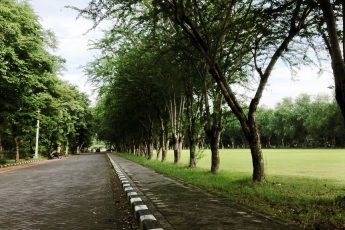Why Post-Processing Matters
As a photographer, you probably know that capturing the perfect shot requires a blend of technical know-how, artistic vision, and skill. But what about after you’ve snapped that perfect image? That’s where post-processing comes in.
Post-processing is a critical step in photography that can take your images from good to great. In this chapter, we’ll explore why post-processing is so important.
Enhance Your Artistic Vision
Post-processing allows you to bring your artistic vision to life. Whether it’s adjusting colors, adding contrast, or retouching blemishes, post-processing tools like Adobe Lightroom and Photoshop can help you fine-tune your images to match your creative vision.
Fix Technical Issues
Sometimes, even the best photographers encounter technical issues while shooting. Post-processing helps correct these issues, like exposure problems, poor white balance, or unwanted noise.
Stand Out from the Crowd
Post-processing can help your images stand out from the crowd. Enhancing your images creates a unique style that distinguishes your work from other photographers.

Professional Appeal
Finally, post-processing adds a professional touch to your images. High-quality, polished images will attract clients and establish your reputation as a skilled photographer.
Essential Post-Processing Techniques
Now that we’ve established the importance of post-processing let’s explore some essential techniques that every photographer should master.
1. Cropping and Straightening
Cropping and straightening your images can significantly impact their overall composition. You create a more visually appealing photograph by eliminating distractions and enhancing the main subject.

2. Adjusting Exposure and Contrast
Proper exposure and contrast are key elements in photography. Post-processing allows you to fine-tune these settings, ensuring your images are neither underexposed nor overexposed.
3. Color Correction
Color correction is another essential post-processing technique. Adjusting white balance and saturation can help you achieve accurate and vibrant colors in your images.
4. Noise Reduction and Sharpening
Reducing noise and sharpening your images can drastically improve their overall quality. These techniques are particularly important when working with high ISO settings or low light conditions.
5. Retouching
Retouching is a powerful technique for removing your images’ blemishes, distractions, or imperfections. This can be particularly helpful in portrait photography, where small touch-ups can make a significant difference.

The Power of Presets and Actions
Presets and actions can significantly speed up your post-processing workflow. These powerful tools allow you to apply pre-determined adjustments to your images with just a few clicks.
Lightroom Presets
Lightroom presets are a collection of settings that can be applied to your images in Adobe Lightroom. Presets can be a massive time-saver, allowing you to apply a consistent style to multiple images quickly.
Photoshop Actions
Similar to Lightroom presets, Photoshop actions are a series of pre-recorded steps that can be applied to your images in Adobe Photoshop. Actions can automate complex tasks, like frequency separation or advanced retouching, saving time and effort.

RAW vs. JPEG: The Post-Processing Debate
There’s a long-standing debate in photography about whether it’s better to shoot in RAW or JPEG format. Let’s break down the differences and why they matter for post-processing.
RAW Advantages
- Greater control: RAW files offer more flexibility in post-processing, as they contain all the original data captured by your camera’s sensor.
- Better dynamic range: RAW files have a higher dynamic range, which means they can handle more extreme highlights and shadows.
- Non-destructive editing: When editing RAW files, you’re working on a separate copy of the original data, so you won’t lose any image quality due to multiple adjustments.
JPEG Advantages
- Smaller file size: JPEG files are compressed, significantly smaller than RAW files. This can be helpful for storage and sharing purposes.
- Faster workflow: Because JPEG files are already processed in-camera, they require less post-processing, which can speed up your workflow.
- Compatibility: JPEG is a universal format easily viewed and shared across different devices and platforms.
Ultimately, the choice between RAW and JPEG will depend on your individual needs and priorities as a photographer. If post-processing flexibility and image quality are your main concerns, shooting in RAW is the way to go.

Post-Processing Tools and Software
There is a wide variety of post-processing software available for photographers, each with its strengths and weaknesses. Here are some of the most popular options:
- Adobe Lightroom: A versatile and user-friendly tool for editing and organizing photos. Lightroom is particularly useful for batch processing and applying presets.
- Adobe Photoshop: The industry-standard image editing software, Photoshop is a powerful tool for advanced retouching, compositing, and manipulation.
- Capture One: A professional-grade RAW image editor, it is known for its advanced color management and tethered shooting capabilities.
- Affinity Photo: A more affordable alternative to Photoshop, Affinity Photo offers many of the same features without the subscription-based pricing model.
- GIMP: A free, open-source image editor, GIMP is a great option for photographers on a budget who still want access to advanced editing tools.
| Software | Price | Platform | Best for |
|---|---|---|---|
| Adobe Lightroom | Subscription | Windows, macOS, mobile | Batch processing, organizing, and RAW adjustments |
| Adobe Photoshop | Subscription | Windows, macOS | Advanced retouching, compositing |
| Capture One | Subscription | Windows, macOS | Advanced color management, tethered shooting |
| Affinity Photo | One-time fee | Windows, macOS, iPadOS | Budget-friendly alternative to Photoshop |
| GIMP | Free | Windows, macOS, Linux | Budget-friendly, open-source option |

Learning and Improving Your Post-Processing Skills
The world of post-processing can seem daunting at first, but with practice and dedication, you’ll soon find yourself mastering these techniques. Here are some tips for improving your post-processing skills:
- Study online tutorials: There are countless free and paid tutorials available online, covering everything from basic adjustments to advanced retouching techniques. Some reputable sources include Phlearn, SLR Lounge, and Fstoppers.
- Join photography communities: Online forums and social media groups can be a valuable source of knowledge and inspiration. You can ask questions, share your work, and learn from fellow photographers.
- Practice: The key to improving your post-processing skills is practice. Experiment with different techniques and tools, and don’t be afraid to make mistakes.
Conclusion
Post-processing is an essential aspect of photography that can greatly enhance your images and help you stand out as a photographer. By understanding the importance of post-processing and essential mastering techniques, you’ll be well on your way to creating stunning, professional-quality images.






